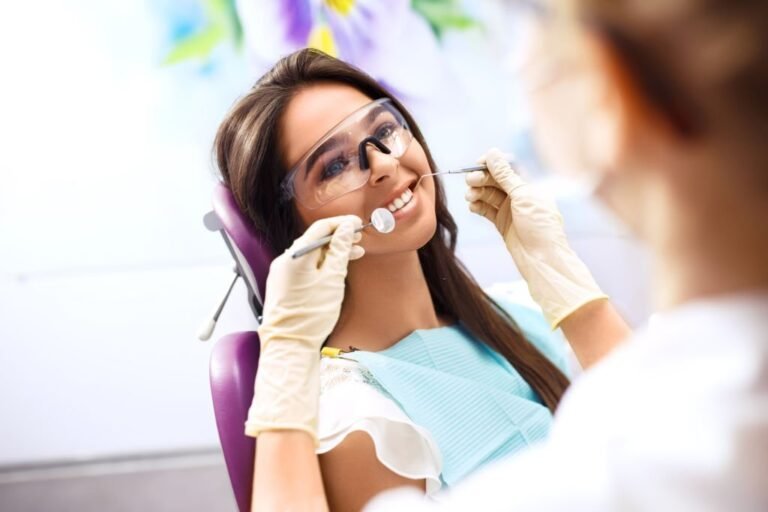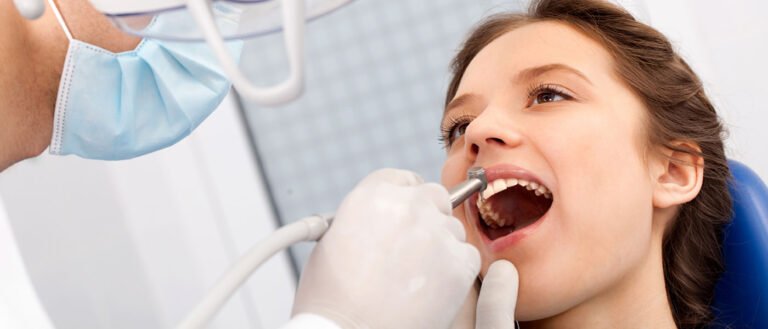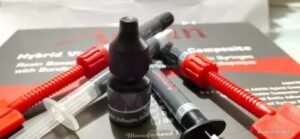Root Canal Treatment

How does RCT Of Teeth work?
The RCT of teeth involves removing all the pulp and pulp chamber from the tooth and filling it with an inert material such as calcium hydroxide (CaCO3) or composite resin. This gives you a smooth surface so that there is no risk of infection due to bacteria entering through any cracks in your teeth. The endodontist also removes any disease, as well as any remaining sensitive nerve endings left behind by trauma or decay within these areas of untreated tissue.
The root canal treatment can resolve dental infections caused by eg. deep cavities, cracks in teeth, trauma, and untreated fillings.
Types of Endodontic Treatment
Filling Only:
Crown Only:
Temporary Bridge:
RCT treatment can be carried out over one or several visits – how many visits will depend on your individual circumstances.

When Root Canal Treatment is needed?
The symptoms of a pulp infection include:
- pain when eating or drinking hot or cold food and drink
- pain when smelling or biting
- a loose tooth
You ultimately get further symptoms similar as:
- pain when smelling or biting returning
- swelling of the goo near the affected tooth
- pus oozing from the affected tooth
- a blown impertinence or jaw
- the tooth getting a darker color
It’s important to see your dentist if you develop toothache. However, the pulp can not heal by itself, If your tooth is infected.
Leaving the infected tooth in your mouth may make it worse.
There may also be less chance of the root conduit treatment working if the infection within your tooth becomes established.

How root canal remedy is Carried Out
This could be executed through either:
- Removing the bacteria from the foundation canal machine (root canal remedy)
- Doing away with the teeth (extraction)
- However, eliminating the tooth isn’t always generally encouraged because it’s higher to hold as lots of your natural teeth as feasible. Before having root canal treatment, you’ll normally take delivery of a local anesthetic.
- This indicates the manner needs to be painless and no greater unsightly than having a filling.
- After the bacteria had been removed, the root canal is filled and the teeth are sealed with a filling or crown.
- In most cases, the inflamed tissue near the tooth will heal clearly.
- Root canal remedy is typically a success. In approximately nine out of 10 instances a tooth can live on for up to 10 years after a root canal remedy.
- To deal with the contamination in the root canal, the bacteria are required to be removed.
- This process of RCT is done by our professionals while using the latest and most advanced RCT KIT so that Patients can be treated in a hygienic atmosphere.
This can be finished via either:
- Removing the bacteria from the root canal (root canal treatment)
- Removing the enamel (extraction)
- But disposing of a tooth is now not typically endorsed as it’s higher to maintain as many of your herbal teeth as possible.

Recovering from root canal Treatment
- It’s crucial to appear after your teeth whilst recuperating from root canal treatment.
- You have to keep away from biting on difficult foods till your treatment is complete.
- After your final treatment, your restored teeth must not be painful, even though they may sense sore for a few days.
- You can take over-the-counter painkillers, consisting of paracetamol or ibuprofen, to alleviate any discomfort.
- Go back to your dentist if you nevertheless have aches or swelling after the use of painkillers.
In most instances, it’s possible to save you the want for further root canal remedies by way of:
- Keeping your tooth clean
- No longer ingesting an excessive amount of sugary food
- Giving up smoking if you smoke
- Discover how to take care of your teeth and gums
Normal activities within two weeks if they follow our instructions carefully:
- Your dentist will advise if you need a crown or filling to protect the tooth once the root canal treatment has been completed.
- If you have severe pain or swelling, please contact your dentist immediately.
- You can visit Sherwani Dental clinic in Lahore for good follow-up care of RCT during the recovery period so that any complications arising this time won’t result in further damage done which could lead back to needing further surgery later down the road (e.g)if pain persists despite taking antibiotics, etc then see us urgently!
